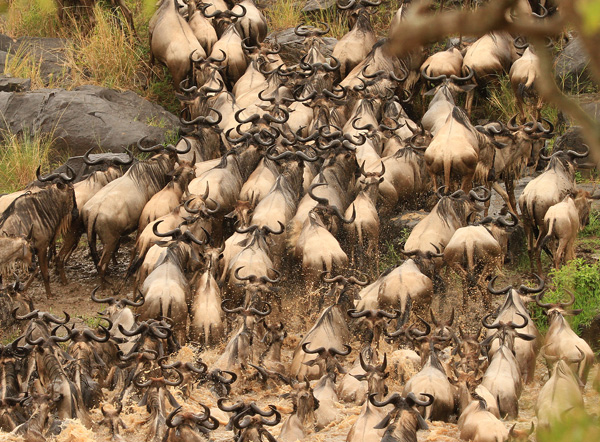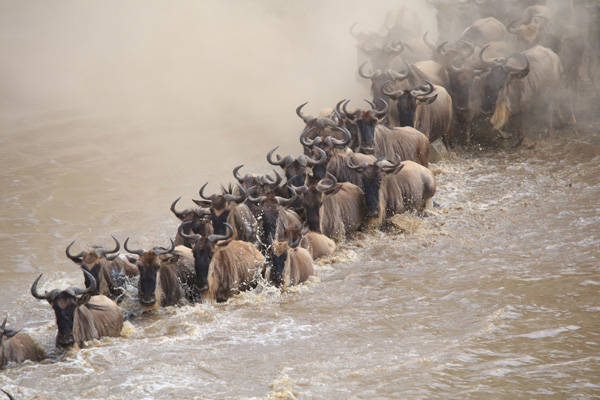Six Facts About the Great Migration
Every year the vast plains of the Serengeti National Park and the grasslands of the Masai Mara Game Reserve are filled with the sound of millions of wildebeest stampeding to find greener pastures. This annual event is one of the most dramatic occurrences in the natural world and is a definite must-see for anyone who wants to tick something epic off their bucket list.
Here are six particularly interesting facts about the Great Migration:
- The Great Migration is the largest overland migration in the world, occurring between the months of July and October every year. Over 1.5 million wildebeest, 200,000 zebras and many other antelopes, gazelles and impalas travel an impressive 1200 miles over the course of each migration cycle.
- Around half a million wildebeest are born between January and February. Typically, all calves are born within the same two- to three-week period, which provides a feast for predators such as lions and hyenas. However, due to the vast number of newborn calves available, predators are overwhelmed and unable to kill as many calves as they would if the birthing period spanned months instead of weeks.
- Wildebeest calves are quick on their feet! Within two to three minutes after being born, the calves are able to run with the herd, and it’s not long before they can outrun a lion. This means that they can join the herd on the Great Migration and give themselves the best chance against predators.
- Surprisingly, with all these animals following the same route across two national parks and grazing on the plains, there is no competition for food. This is because the wildebeest and the zebra eat different parts of the same grass, so each can eat their fill without impacting the other.
- Around 250,000 wildebeest and 30,000 zebra die during the annual migration. Reasons for these deaths include thirst, exhaustion, stampedes and predators. With over 3,000 lions following the migration, and hundreds of crocodiles laying in wait to catch helpless wildebeest during river crossings, it’s not hard to see how predation can have a big effect on the wildebeest population.
- The Great Migration is important for wildebeest survival. When the grasslands of the Serengeti dry out, the wildebeest head to the Masai Mara looking for food. Nobody can quite explain how the wildebeest navigate so successfully. It is suspected that they have evolved to follow specific instincts that condition them to respond to the rains, travelling between countries in a large circuit that many have completed several times in their life, in the pursuit of new grass.
Come and see the Great Migration for yourself
The Great Migration is one of the most incredible natural shows on Earth. Seeing and hearing great herds of animals thunder past you is an experience you’ll never forget. If these facts have convinced you to visit Africa to see it for yourself, call Somak today on 020 8423 3000. Our safari experts can work with you to create a holiday of a lifetime!
Contact
Somak House
Harrovian Business Village
Bessborough Road
Harrow On the Hill
HA1 3EX
Tel: +44 20 8423 3000
Fax: +44 20 8423 7700
Email: info@somak.com
Opening times
| Mon - Fri | : | 9am to 6pm |
| Sat - Sun | : | Closed |









